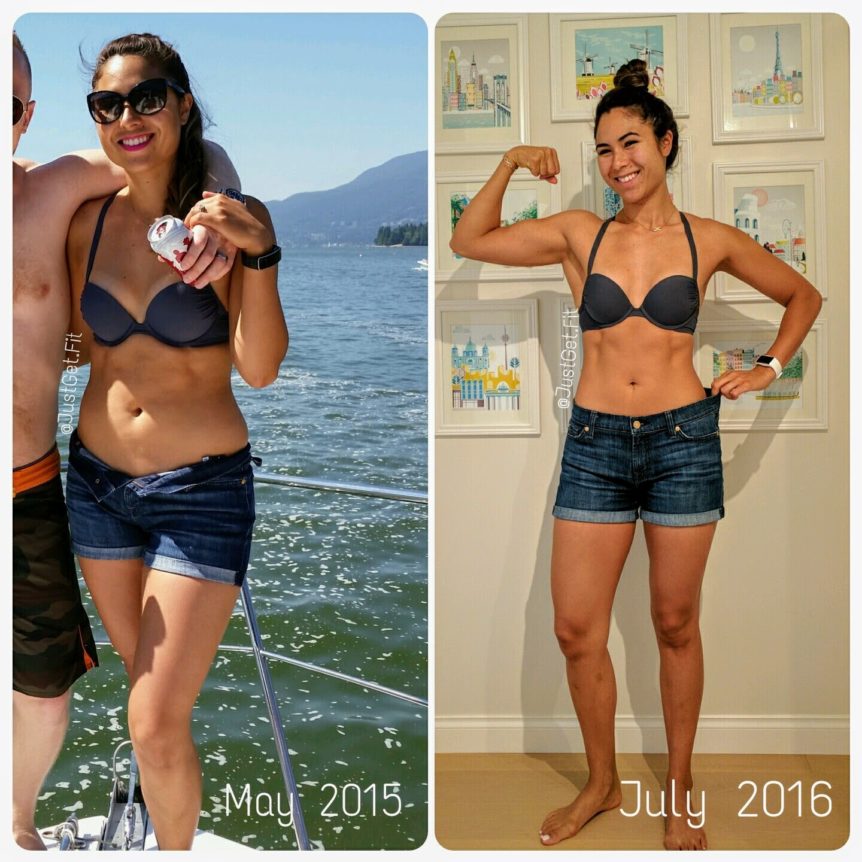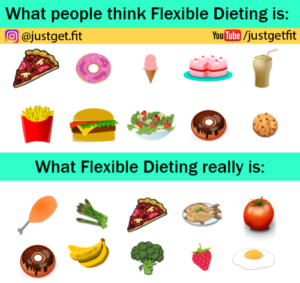This is one of the most frequently asked questions I get so I thought I’d share my personal strategies and experiences with you. Please keep in mind at the end of the day you need to do what is best for your body. These are just the things that I find have helped me to be successful.
There is no quick and easy way to lose weight. In order to lose weight you have to be in a calorie deficit. This means you need to burn more calories than you eat. In order to lose one pound you need to burn approximately 3500 calories.
When people hear this they often think well if I deprive myself and only eat 800-1000 calories while being active I’ll lose weight fast. True. BUT, not only is this not healthy, it is incredibly difficult to sustain. The more active you are, the more food you need to sustain yourself. Your body already burns calories just sustaining itself doing everyday functions like walking and breathing. The body is also incredibly resilient and will adapt to a calorie deficit. It will slow your body down in such a way that it can sustain itself on the calories you’re feeding it, even if it’s less than usual. In turn, a bigger deficit is required when your weight loss plateaus.
For this reason, weight loss is best done in a slow and sustainable way. The weight may come off slower but it will also be easier to avoid yo-yo dieting and gaining weight back quickly.
So, where to start? There is lots of excellent advice out so this is simply based on my experiences. The next section will talk about:
- Eating in a deficit
- How to track your progress
- How to know how much you’re eating
- How to know how much of a deficit to eat in
- Can IIFYM can make things more sustainable?
Eating in a deficit
When trying to lose weight or lean out I don’t like to change my training drastically. That means I’m not adding an hour of cardio a day. I just can’t. So, this means I look at what i’m eating. If I eat 2000 calories to maintain my body weight I will aim to drop my calorie intake and instead eat 1800 calories a day. Now a lot of people say i’m eating less and i’m not seeing progress. Unfortunately a lot of people aren’t honest with themselves. They don’t think about that extra Starbucks drink they got, the treat someone offered them at work or the small second helping of food they had at dinner. OR, they eat “perfectly” Monday to Friday and think they deserve to cheat all weekend. It doesn’t work like that. IT ALL ADDS UP! This is why dieting isn’t easy and many people are unsuccessful. They think it’ll be easy. They think that if they don’t read the nutritional information on the package or don’t enter that treat it into My Fitness Pal it won’t count. Believe me, it counts!
For sustainability reasons I like to start with eating in a small deficit. From there I can decide if I want to add 20 minutes of cardio a couple times a week or decrease my calories by another 50-75. I never drastically decrease my calories because when my weight loss plateaus because I’ll have to do even more drastic and unsustainable things to maintain it later.
Tracking your progress
Tracking your progress in different ways can be important as sometimes the scale is inaccurate. The number on the scale can vary depending on when you last ate, had a bowel movement, how hydrated you are, if you consumed a lot of sodium or weighed yourself at a different time …among other things. So, I always recommend people take progress pictures, measure themselves and weigh themselves.
How to know how many calories you’re currently eating
In order to be in a deficit, you need to know how many calories you’re currently eating! This in often a big eye opener for people. So before you calculate how many calories you should be eating based on your age, height, weight and activity level you should really know how many calories you’re currently eating. People normally just jump ahead to the extreme and slash calories and throw in tons of cardio. DON’T!
Instead, take one week to track everything you eat. Don’t change how you eat. That defeats the purpose and will skew the information you’re collecting. DO record everything you eat. Yah, it’ll be super tedious but I’m only suggesting you to do it for a week. I recommend using free apps like My Fitness Pal or Calorie King. I personally use MFP as it is easy to scan the bar codes of most of the foods I eat. It also has a huge data base so you can find most things in there (no matter where you live). When I say track for a week, I mean it. All seven days. It’ll give you a really good idea of where your calories are coming from, sugary drinks? alcohol? dessert? sauces? eating out?!
For many people, tracking for a week gives them a lot of insight into how they eat and makes it easier to be more mindful when they decide to buckle down and diet. Some people also find out they are eating way more calories than they realize. Yah, that slice of cake from your coworkers birthday party at lunch was probably 400 calories! Remember, knowledge is power!
*I suggest you keep reading and come back to the videos later.*
Starting a calorie deficit
After tracking for a week you’ll have a good idea of how much you eat on average. This makes it easier to accurately reduce the number of calories you eat.
If you find you were eating 2500 calories a day, I recommend cutting your calories by 200-250.
You can do this by calorie counting, tracking your macros (what I personally recommend) or just eyeballing your food (which isn’t that accurate but if you consistently eat the same foods, eating slightly less than what you ate before works well for some people).
I would personally maintain a calorie deficit for a couple weeks or until my weight/progress plateaus. When your progress plateaus there are couple things I normally contemplate:
- Have I truly been sticking to my calories/macros or did I go a bit off track this week?
- Measure myself. Have my measurements changes?
- How are my clothes fitting?
- Has the scale changed? (keeping in mind all the reasons why I might vary)
If I have been really diligent with my eating and nothing has changed then it is time to decide to:
A. cut calories but another 100
or
B. add in a little cardio or increase my training
There isn’t going to be one right way for everyone. You need to make decisions based on how you life, train and what’s sustainable for you!
You can continue playing with these pattern until you reach your goals.
Can IIFYM (If it fits your macros) create a more sustainable way of “dieting” for you?
Personally, IIFYM has brought balance to my life and enable me to incorporate more foods I like. I have a more detailed video at the bottom to give you more info about IIFYM.
Please keep in mind that *if you are someone who has a history with eating disorders, struggle with having an unhealthy or rigid relationship with food, can become obsessive or rigid in their eating..this might not be for you. Some people find great success with IIFYM while others find it very time consuming and restrictive. Want to know more about macros, check out the video at the bottom of the page.



Comments 11
Pingback: I’m starting a diet! | Just Get Fit
Pingback: “How do I Get a Flat Stomach?” | Just Get Fit
Pingback: Can you target fat loss? | Just Get Fit
Pingback: The Problem with Always Finishing your Food | Just Get Fit
Pingback: How to Lean Out the Healthy Way | Just Get Fit
Love these posts! Always so helpful and attainable suggestions! Thank you
Pingback: “Help, I”m struggling to lose weight!” | Just Get Fit
If you’re counting Macros and cutting calories (but not adjusting activity level) does that mean all your calorie cuts always come from your carb allowance? Or are you supposed to adjust macros based on target weight?
Author
Sorry love i’m not entirely sure I understand your question. It’s personal preference where you cut calories from. Some people prefer to drecrease them evenly. Others reduce their fat and others reduce their carbs. There isn’t one way or best way to do it. Everyone is different and has different preferences. At the end of the day a calorie deficit is the most important part. I’m currently working on leaning out for summer and I’m not tracking my calories or macros.
Pingback: Calculating your Maros | Just Get Fit
Great info. Thanks